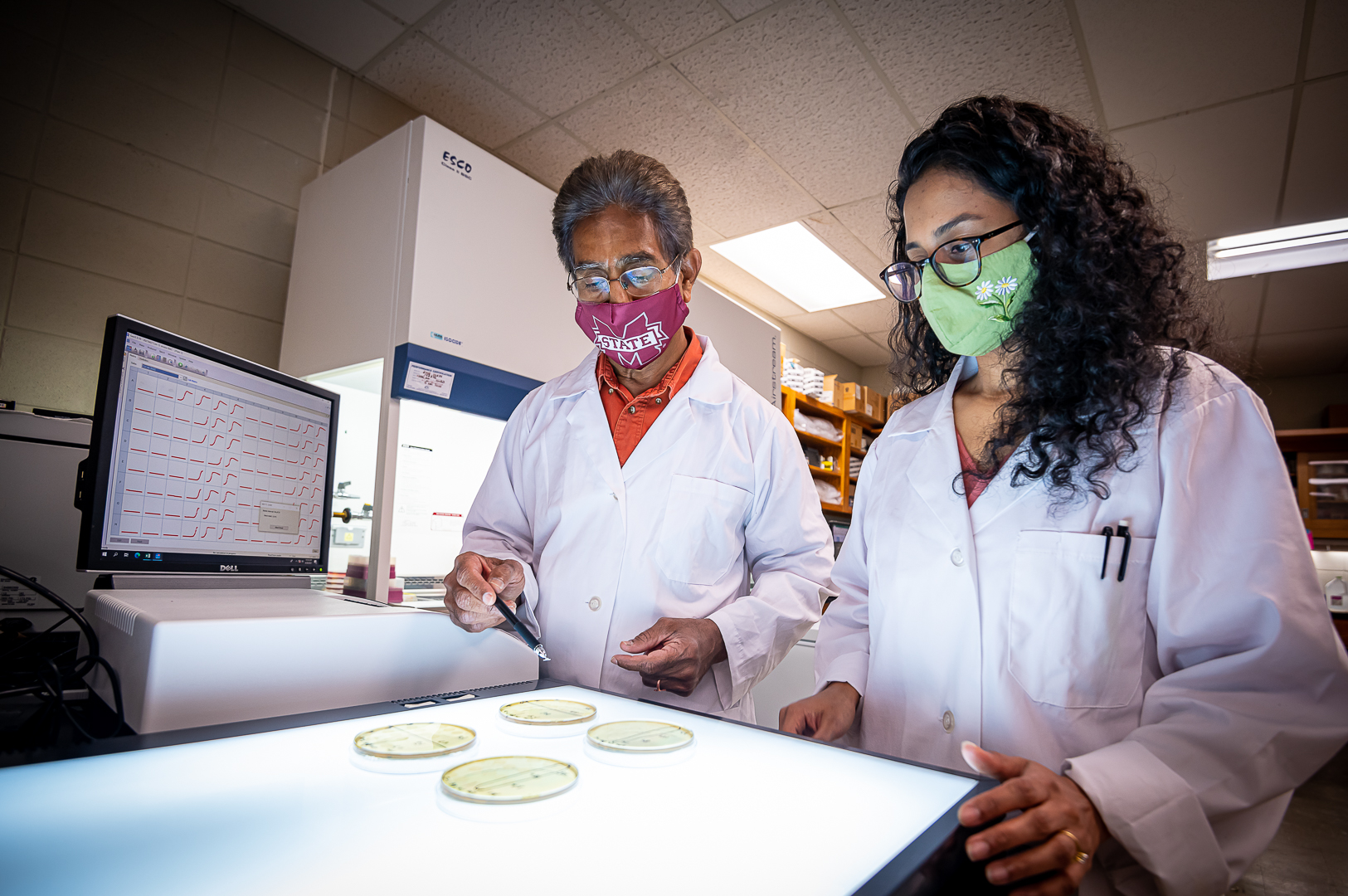The information presented on this page may be dated. It may refer to situations which have changed or people who are no longer affiliated with the university. It is archived as part of Mississippi State University's history.
WITH THE BROAD USE OF DISINFECTANTS NECESSITATED BY A PANDEMIC, unintended ecological repercussions are likely to occur. One such reaction may be bacteria developing a tolerance or resistance to certain disinfectants that are commonly used to kill them, as they wash downstream into the environment. Mississippi Agricultural and Forestry Experiment Station researchers are hard at work hoping to find the circumstances in which such an evolution occurs.
Dr. Ramakrishna Nannapaneni, research professor and food microbiologist, has cast his focus on the adaptation methods of Listeria monocytogenes, a type of pathogenic bacteria that causes food poisoning. L. monocytogenes has been found in several food products, and though the incidence of Listeria infection is relatively low, at an estimated 1,600 illnesses each year in the U.S., the mortality rate is more than 25 percent.
Understanding the conditions where L. monocytogenes may persist by outmaneuvering specific disinfectants is a pivotal step to ensuring the safest food production and processing environments possible. Nannapaneni shared how bacteria adapts to its environment.
"Bacteria is a living organism, and the will of every living organism is to survive whatever stress it is put through. When certain biocides, or disinfectants, are degraded below the concentration necessary to kill the bacterium, it can create a predisposing condition to adaptation. The bacteria's DNA acts like a living memory, and changes become permanent, so the next time it encounters sublethal concentrations of that biocide, it will tolerate more or may survive longer," Nannapaneni said.
With that adaptive response in mind, Nannapaneni and his team began collecting various strains of Listeria, some isolated from known contaminated food, some after epidemic outbreaks, and one from unpasteurized cheese.
Once the diverse strains were gathered, they were separated and distributed between microwell plates, where they were treated with various concentrations of either a broth- or water-based biocide solution. Scientists monitored the rate and conditions upon which the strains showed early signs of adaptation. They recorded and analyzed a great deal of data, including the growth kinetics, inhibition rate, and kill rate of each of the Listeria strains at every point of the concentration gradient.
Nannapaneni watched the development of a low-level but significant increase in the bacteria's resistance against one of the most widely used biocides. He said that it was not the adaptive response that was particularly groundbreaking, but the method through which they were able to detect the low-level responses early.
"The unique aspect of our data collection method is that it uses a high-to-low concentration gradient against many strains, across two nutrient models in six-well columns at the same time. It allowed us to observe the early changes in growth dynamics in real-time that alerts us to low-level physiological changes in the microenvironment," Nannapaneni said.
Nannapaneni credited his former doctoral student, Dr. Divya Kode, for finetuning the experimental data design. Kode, who graduated in May, has an extensive background in microbiology and worked on this research as part of her dissertation.
Having a firmer understanding of how the dangerous L. monocytogenes can adapt and persist in sublethal concentrations of certain biocides provides information to the food manufacturing industry on more precise and effective ways to mitigate them. The work done by Nannapaneni and Kode also ensures that future researchers will be able to adopt this methodology and apply it to monitor the close-increment adaptation of other bacterial strains.
Both researchers observed an average of 1.5 to 2.5-fold low-level increase in tolerance or resistance to benzalkonium chloride, first generation quaternary ammonium compound (QAC), in some L. monocytogenes strains, while other generation QACs are yet to be tested.
"If the industry is aware of the persistence of Listeria in some environments where QACs are widely used, it will encourage more preparedness and effective mitigation strategies," Kode said. In addition to understanding biocide tolerance, their work may also lead to the early detection of low-level antibiotic-resistant subpopulations of L. monocytogenes and other foodborne bacterial pathogens that develop under predisposing stress environments.
Scientists plan to continue the research to determine if such low-level bacteria's adaptation to certain biocides is short-lived or constitutes a permanent change.
This research was funded by the USDA National Institute of Food and Agriculture, USDA Agricultural Research Service, and the Food Safety Initiative of the Mississippi Agricultural and Forestry Experiment Station.
Bacteria is a living organism, and the will of every living organism is to survive whatever stress it is put through. When certain biocides, or disinfectants, are degraded below the concentration necessary to kill the bacterium, it can create a predisposing condition to adaptation.
Dr. Ramakrishna Nannapaneni


